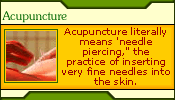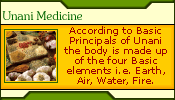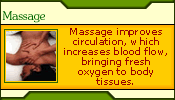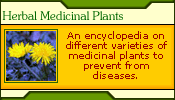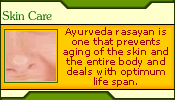Vamana Karma
This term literally means to expel the vitiated doshas through the
oral route and is the pradhan karma of the panchakarma therapy. Vamana
or the expelled material may consist of undigested food, kapha, and
pitta.
Vamana karma is a specific therapy for kaphaja disorders and following
are the indications of vamana:
· Nasal discharge
· Acute fever
· Cough
· Tuberculosis
· Asthma
· Indigestion
· Poisoning
· Nausea
· Anorexia
· Obesity
· Sore throat
A variety of vamana drugs are used induce purva karma before vamana
as they are suitable in mobilizing the doshas.
Following indicates the effectiveness of vaman: ·
· Maximum elimination of doshas with minimal dose
· Minimization of the disease
· Absence of complications
· Pleasant taste smells and colors
After vamana the loud speech, overeating, continued sitting, too
much walking, anger, anxiety, coitus, retention of natural urges
should be avoided.
Virechana Karma
Literally meaning the expulsion of doshas through the anal passage,
virechana is the specific therapy for pitta dosha disorders. Under
the panchkarma therapy virechana karma is the next pradhan karma.
Virechana expels pitta from the amashaya (stomach and upper part
of the small intestine) and is neither stressful nor painful and
is the easiest procedure, usually unaccompanied by any complication.
Following are the indications for virechana: ·
· Fever
· Skin diseases
· Piles
· Splenetic disorders
· Abdominal swellings
· Headaches
· Constipation
· Anorexia
· Asthma
· Cough
· Jaundice gout
· Indigestion
· Gastrointestinal disorders
· Edema
After virechana karma it is advisable to the patient to take plenty
of rest and light diet.
Basti Karma
The term basti has been derived from the fact that the Basti yantra
(apparatus) used for introducing medicated materials is made up
of Basti or animals' urinary bladder. Basti is among the major panchkarma
procedures and is used to cure vatic disorders. This remedy is applied
to restore the balance of the doshas and has the following effects
also:
· Increases weight in emaciated people
· Decreases weight in the obese
· Improves vision
· Prevents aging
· Brings back luster and strength
· For health and longevity
The Basti procedure that is applied through the anus may be Niruha
basti.That consists of the use of decoction of appropriate drugs
Following are the indications for Niruha Basti:
· Retention of flatus
· Retention of urine
· Retention of stools
· Loss of strength
· Dosha deficiency
· Fever
· Splenetic diseases
· Abdominal swelling and pain
· Headache
· Lumbago
· Heaviness
· Edema
· Stiffness
· Gout
· Piles
· Dysuria
Anuvasana basti
In which oily substances are used. Following are the indications
for Anuvasana basti:
· Coarseness
· Increased appetite
· Increase of vata dosha
Following indicates the effectiveness of adequate basti:
· Proper passage of wind and urine
· Proper balance of doshas
· Feeling of lightness in the body
· Pleasant feeling
· Increased appetite and strength
After the remedy of basti the patient must take light diet along
with the following activities that are to be avoided after basti,
such as:
· Sitting for a long duration
· Standing for it long duration
· Excessive talking
· Travelling
· Sleeping during the day
· Coitus
· Sexual relationship
· Anxiety
· Anger
Sirovirechana Karma
Also known as nasaya it is generally the last step in pradhanakarma
of the panchkarma therapy. This refers to the applications of medicines
or medicated oils administered through the nasal passage spread
throughout the head-and its constituent parts and influence all
the doshas and the diseases situated in these parts.
It is referred to as the best and the most specific procedure for
diseases related to head (shiro- roga).
Nasya karma prevents the diseases of the eyes, ears, throat, oral
cavity and improves the speech, delays aging; and bestows a pleasant
oral smell.
Following are the indications for the use of shirovirechana:
· Stiff neck stiff jaw
· Chronic corrhyza
· Tonsillitis
· Cataract
· Headache
· Earache
· Shoulder ache
· Toothache
· Hoarseness of voice
· Stammering
· Alteration of voice
Following are the four types of nasya procedures that can be administered:
· Navana nasya
It refers to the instilling of the drops of medicated oil in the
nose.
· Auapida nasya
It refers to the instilling of the juice (extract) of a drug through
the nasal passages.
· Dhamapana nasya and Pradhdmana nasya
It refers to the inhalation of fine powder (if drugs in the nasal
passages with the help of a nadi- yantra. In Dhumanasya medicated
fumes are inhaled through the nasal passages and are eliminated
through the oral route.
During the nasya procedure, the head should not be excessively
flexed or bent, and the patient should be supine.
The patient must avoid following things:
· Speech
· Anger
· Laughing
· Swallowing
· Clearing his throat
Following indicates the effectiveness of adequate nasya:
· Lightness of the body
· Good sleep
· Lightness of the head
· Feeling of pleasure
After the remedy of nasya the patient should avoid cold water,
oil, ghee, alcohol, head bath and inhalation of dust and fumes.
|


